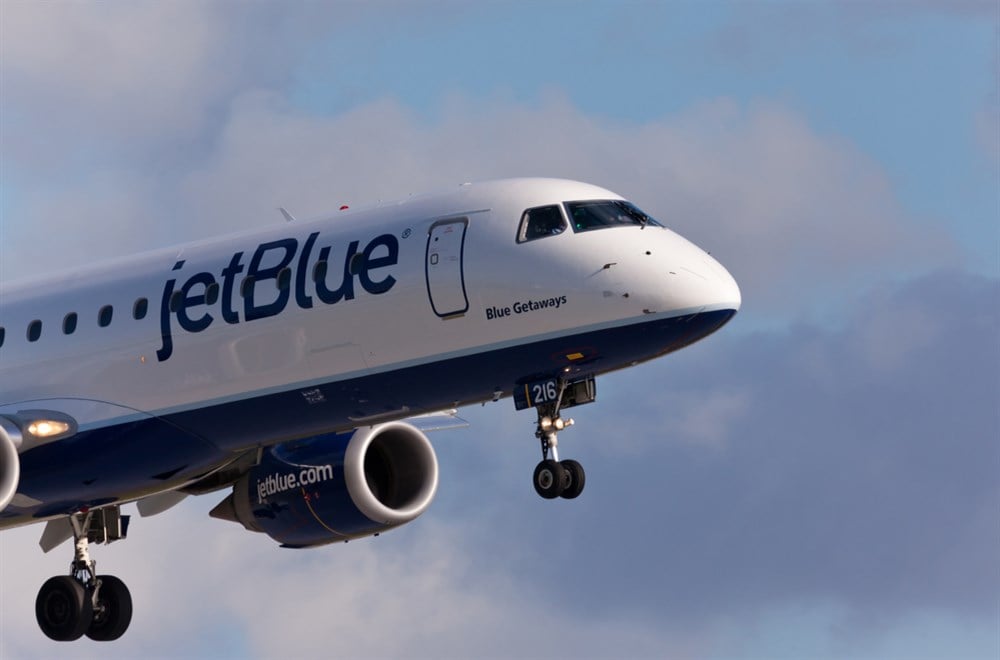JetBlue Ends Alliance With American, Chance Of Spirit Merger?

JetBlue Airlines (NASDAQ: JBLU) stock is declining by as much as 6.5% during Thursday's trading session, even after initially positive news regarding a tough but strategic decision by management. Executives have decided to break away from the airline's alliance with American Airlines (NASDAQ: AAL).
After an eight-year-long winter in the stock, JetBlue has decided that it is time to finish the objective it had set to achieve a year ago. Ending a passenger-sharing agreement with American Airlines may keep FTC (Federal Trade Commission) and Justice Department blockades from prohibiting the acquisition once more; now, JetBlue is voluntarily becoming a minor representative of the U.S. airline industry.
Considering that American Airlines' stock only declined by approximately 2.5% during the same session, it can be taken as an initial reaction by the broader market, implying JetBlue has more to lose in this deal than American after ending the alliance. Increasing the odds of a successful acquisition would make JetBlue the fifth-largest airline operator in the nation, providing it with more aircraft and routes, which is especially important when aircraft manufacturers like Boeing (NYSE: BA) are struggling to keep up with demand.
The stock's decline on Thursday, taken individually from the news, could be a smoke screen after investors dig into the roots of perception.
Market Preference
Now that Southwest Airlines (NYSE: LUV) has made it into The Goldman Sachs Group (NYSE: GS) 'Conviction' list, markets are also sending in their votes regarding what money 'likes' in the airline sector. By placing Southwest at one of the highest P/E ratios, markets are telling investors that they are willing to pay a higher premium for each dollar of the underlying business's current - and future - earnings, a preference not to be taken lightly.
Now that investors understand the market's preference for smaller airlines over the large ones like American Airlines or even Delta Airlines (NYSE: DAL), a 'rally by association' trend can begin to develop for JetBlue.
When investors break down the price action in JetBlue's chart, it can become evident that ending this alliance and striving for the long-awaited merger are two catalysts that would help the stock find a bottom. Historically speaking, JetBlue's price-to-book valuation multiples, which can act as a reliable proxy for valuation apart from the mere stock price, are beginning to lay the rest of the foundation needed for a price recovery.
Sporting a current 0.8x P/B multiple, JetBlue is assumed to be trading at a 20% discount to its book value. It is also significantly lower than its normalized ranges of 1.5x to 2.5x. JetBlue analyst ratings may begin to seem a little conservative to those investors who understand the ramifications of a discount to book value, as the top-side price target only offers a 14.5% potential ceiling.
Structured Future
JetBlue's high price of $27.2 per share in 2015 marked the last high for the stock, followed by a multi-year decline to today's less than $10.0 per share. The last time the stock peaked was in 2021 for a price of $21.7 per share; all of this, put into perspective, can point investors to two significant price levels that analysts may be too cautious to recognize and risk their accuracy reputations.
Taking Wall Street's 'Bear Market' definition, which suggests a 20% retracement from all-time - or recent - high prices, JetBlue's $17.4 level can act as a relative resistance level for traders to attempt to test once more before finding direction.
The catalyst needed may lie within the Spirit merger, considering Spirit Airlines (NYSE: SAVE) carries an enterprise value of 6.8 billion; JetBlue will need to dig deep into its pockets to make the transaction happen. Looking into JetBlue's financials, it would seem impossible for the company to realize an all-cash transaction, so financing will be necessary for this merger to be realized.
Luckily for JetBlue investors, the deal was reached before the airline's sector recovered in the past twelve months, where the agreed value to be paid was a significantly lower $3.8 billion. JetBlue agreed to pay $33.5 per share, which would be an 88.5% premium to today's prices. This assumes that Spirit's $6.2 billion in debt would be assumed or refinanced by the new combined entity.
More News
View More



Recent Quotes
View More
Quotes delayed at least 20 minutes.
By accessing this page, you agree to the Privacy Policy and Terms Of Service.